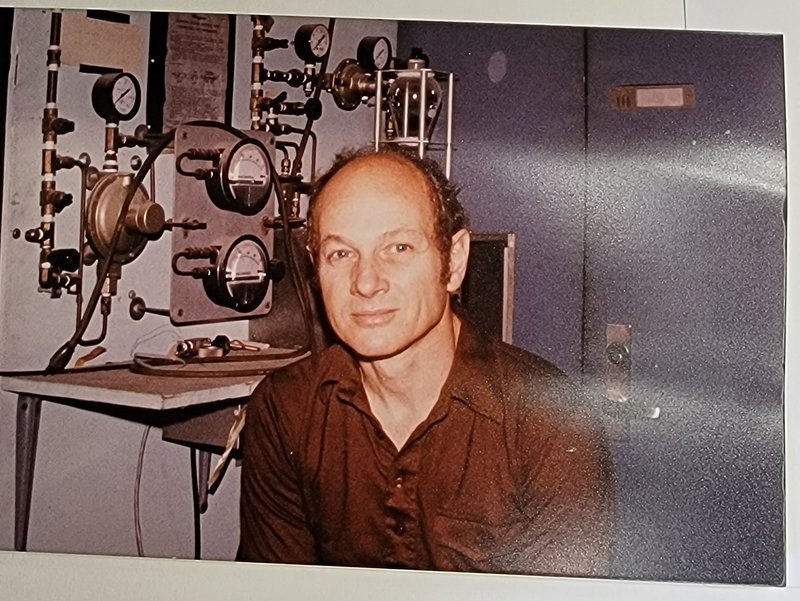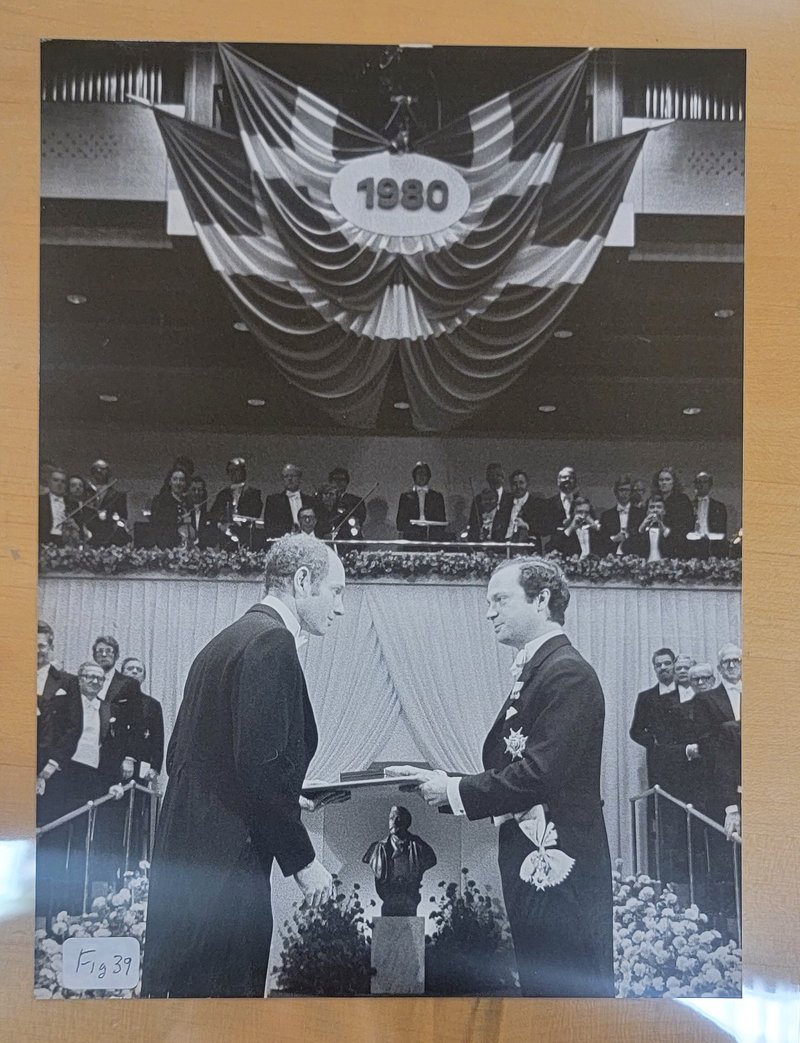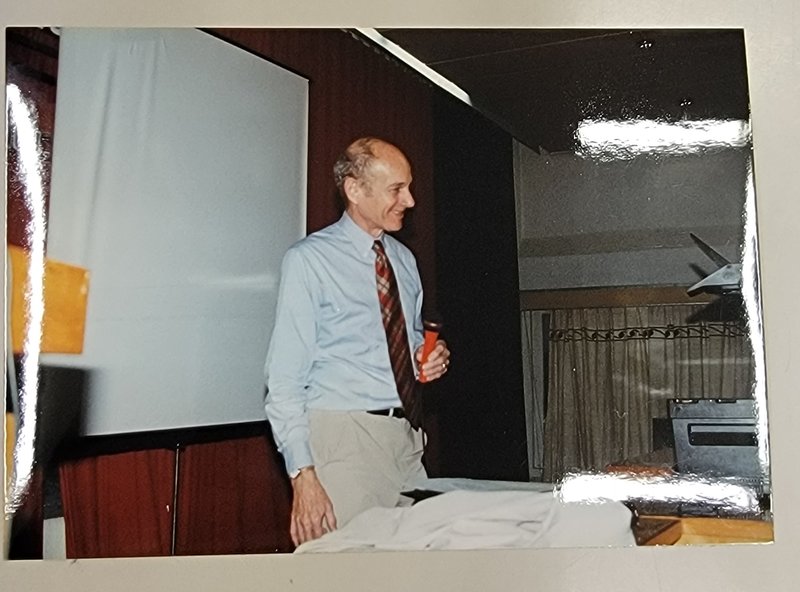Nobel laureate James Cronin's papers open to research in Special Collections
The James Cronin Papers are open for research. The collection was processed and preserved in part with support from The Grainger Foundation.
James Cronin (1931-2016) was a physics professor at the University of Chicago and winner of the Nobel Prize for Physics in 1980 for discovering the CP violation. He specialized in particle physics for the first half of his career, later focusing on cosmic rays and their origin. The papers primarily document Cronin's research and discovery of the CP violation, his research on cosmic rays, and the building of the Pierre Auger Observatory, highlighting Cronin's dedication to science and the breakthroughs he made within the field.

James Cronin Papers, Box 131, Folder 8, Hanna Holborn Gray Special Collections Research Center, University of Chicago Library.
James Cronin was born in Chicago, IL, on September 29th, 1931, to James Farley Cronin and Dorothy Watson. Cronin attended Highland Park Public School for middle and high school, where he expressed an interest in science, leading him to study physics and mathematics as an undergraduate at Southern Methodist University, Texas. After graduating in 1951, Cronin attended the University of Chicago to study particle physics, where he earned his doctorate in 1955.
It was during this time that Cronin met his wife, Annette Martin. They married in 1954 and had three children together.
After graduation, Cronin accepted a position at Princeton University as a physics professor and began working at the Brookhaven National Laboratory. While working with other physicists, including Val Fitch, Cronin discovered the CP violation by accident. The question of whether or not the CP violation existed had been brought up before: if a neutral k and neutral k- are next to each other and could decay to the same final products, how are they different? The answer would be a breach of asymmetry between the two. Cronin and others were working on experiments relating to other questions in 1963, but after observing and measuring hundreds of photographs, they detected asymmetry between matter and anti-matter. This is known as the CP violation, and their work was published in 1964. The discovery of the CP violation changed the understanding of the Big Bang and the incredible odds that human life would develop.
Cronin moved to Chicago and began working as a Professor of Physics at the University of Chicago in 1971. He taught lectures and classes, helped students with their experiments, and advised on various dissertations. A big draw for Cronin for his initial move to Chicago was the new Fermi Laboratory Accelerator, where Cronin conducted experiments focusing on the production of particles at high transverse momentum, the production of direct leptons, and some of the CP-violating parameters of the neutral K meson. In 1997, Cronin became an emeritus professor at the University of Chicago.
In 1980, Cronin was a co-recipient winner of the Nobel Prize for Physics with Val Fitch. Their discovery of the CP violation was groundbreaking and had lasting effects in the particle physics field. Cronin and his wife attended the Nobel Prize award ceremony in Stockholm in 1980 to receive the prize. This was a massive honor for Cronin, and he recognized the value and merit of receiving it.
Beginning in the 1990s, Cronin moved away from particle physics and focused instead on studying cosmic rays, a relatively new scientific topic begun by Pierre Auger in 1938. Cronin’s main question focused on learning the origin of cosmic rays. They could come from the sun, other galaxies, or supernovas; however, because of magnetic fields, the cosmic ray’s entrance is distorted, meaning that the ray could be coming from one direction, but the source could be an entirely different direction.

James Cronin Papers, Box 129, Folder 18, Hanna Holborn Gray Special Collections Research Center, University of Chicago Library.
Cronin spoke with scientists worldwide as he was not the only one interested in studying cosmic rays. Together with scientists from 15 other countries, the plan was to develop a new observatory to study cosmic rays. This observatory was built in Argentina and is known as the Pierre Auger Observatory. Officially completed in 2008, the observatory had been collecting data for a few years, and on November 9th, 2007, the first findings about directional energy and cosmic rays were published in the journal Science. The project was a model of international collaboration that helped Cronin and others to answer questions about cosmic rays and created new opportunities for outreach, education, and development in western Argentina. A school was built in Cronin’s name, now known as the James Cronin School. Cronin was able to help sponsor the school thanks to the help of Chicago businesspeople and the University of Chicago.
In 2004, Cronin and the University of Chicago Press published Fermi Remembered. While developing the observatory, Cronin had also been conducting years of research on his former teacher, Enrico Fermi. Fermi Remembered was written and published to celebrate the 100th anniversary of Fermi’s birth and his accomplishments as a physicist.
Cronin broke new ground in particle physics and cosmic rays, serving as an inspiration to those both inside and outside of his classroom. Cronin died in Saint Paul, MN, on August 25th, 2016. His work and legacy continue to influence scientists today.



